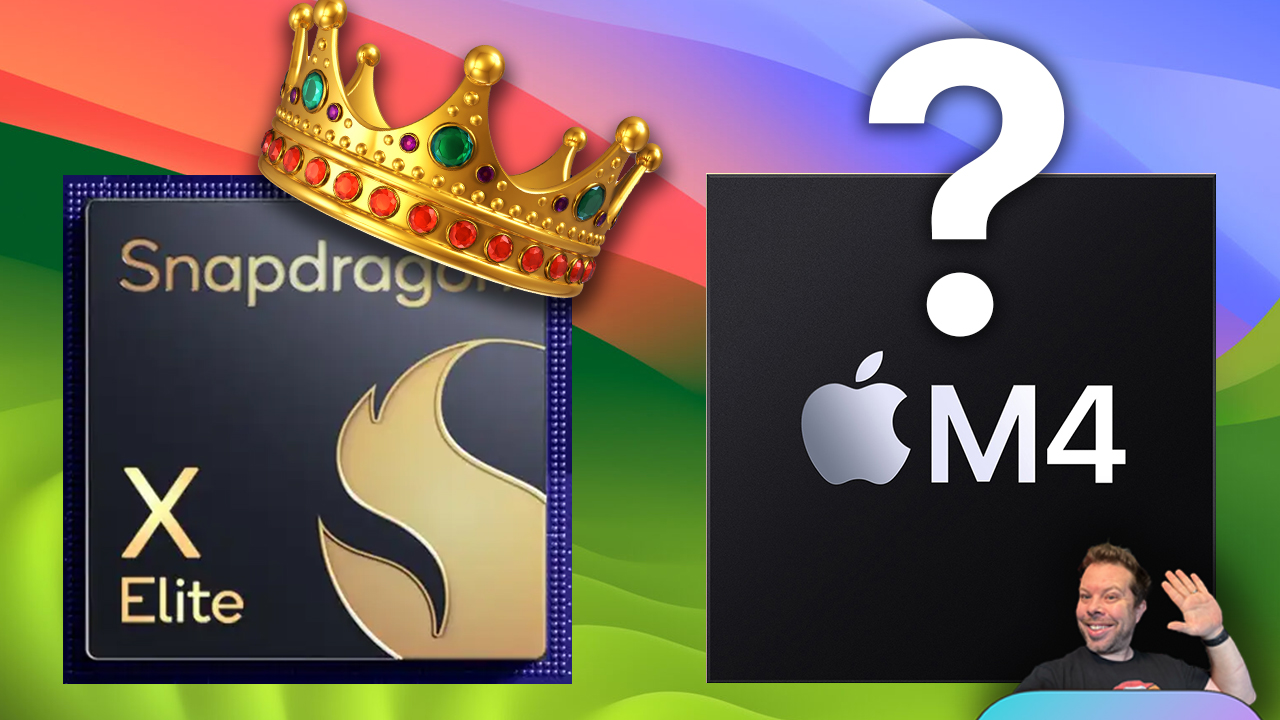Qualcomm’s Snapdragon X Elite ARM Chip is APPARENTLY faster than M3! What will we do? M4 I guess, but will it be fast enough? Let’s get geeky.
According to The Verge, Microsoft is expecting the new Snapdragon chips for its future Surface devices to be 21% faster than M3, along with it’s own X86 emulation layer similar to Apple’s Rosetta 2, but also, even faster. So is Apple’s lead gone? Well, no, not really, as we’re comparing this Snapdragon to the entry level of Apple’s latest chip generation, not the M3 Pro, M3 Max or the still currently theoretical M3 Ultra. Even so, it’s nice to get a little competition, so well done Snapdragon, good job buddy. You keep it up.
Now, the Surface Pro currently, in it’s cheapest un-discounted form starts at 1099, with an Intel Core i5, 8Gb of Ram and 256gb of SSD storage. So a little more expensive than a MacBook Air, and somehow I’ve never heard anyone complain about these specs. Also, it appears not to come with a keyboard, so there’s that. There’s a non-pro which does have a keyboard starting at $999 with the same specs, but only if you’re happy with a not-metal alcantara one, so it feels like a car seat, of you want metal you’re starting at 1269.
The Snapdragon version which seems to be listed as the Microsoft SQ3 with the same storage and ram, 8gb and 256 starts at 1399. Without a keyboard. But that is the version that came out in 2022, and M3 is over twice as fast in single and multicore than that in Geekbench, so this new X Elite must be a massive jump to beat M3 by 21%. We’ll see what happens in the real world, but it should be said the M3, according to Geekbench is still 28.8% faster in single core tasks which is what makes your system feel fast, snappy, nimble. Only in more sustained workflows will the Snapdragon have an advantage, say rendering a video, converting multiple files and the like. That’s absolutely relevant, and if it wasn’t, we wouldn’t have things like the M3 Max, which takes what you get in an M3, the same design of efficiency and performance cores, just more of them, and more GPU cores to boot.

And when you compare that Snapdragon X Elite to an M3 Max, It handily smashes the newcomer with more than 50% more performance in multicore than the Elite. And in Open CL, the M3 Max hits almost 95,000 points, while the single result on Geekbench for the X Elite? 10. It got 10 points. I think that test didn’t really work. BUT IF IT DID – the M3 Max was about 9,500 times faster. So let’s just assume that’s right.
But with M4 on the horizon, and lets be honest, the Snapdragon not really being available yet in the real world, M4 is likely the real competitor here. So how will M4 perform?

We are of course getting into a bit of speculation here, but we have three generations of Apple Silicon to look back on, and so far the improvements have been, well improving year on year, with M1 to M2 getting around 10% in single core and 15% in Multi core, and M2 to M3 getting just over 20% improvements on both sides. Bearing in mind that M3 is already almost 30% faster in that snappy feeling single core, an extra 20% boost would be huge, and 20% on the multi core brings it in line with the X Elite.
Snapdragon X Elite Efficiency
One thing to bear in mind though is that Snapdragon X Elite has a TDP of 45W, while the M3 is just under half of that at 22W. That means less heat in the M3 to disapate, less need for noisy fans and potentially twice the operational time from a similar battery. That’s a big deal, oh, and apparently, when that 21% faster Geekbench score was run, the X Elite was set up on an 80W device profile. So almost 400% the power consumption and heat, for a 21% bump in performance. Maybe the battle is still on.
So, roll on June when the first X Elite laptop is set to go on sale. Then we can see how it performs in the real world, in the power and thermal constraints of a real device like our M3 Tests have been so far. Often without a fan at all in the M3’s case. And of course June is WWDC time, when Apple will be likely dropping the M3 Ultra chips, ahead of M4 which I’m still hoping we’ll see in October, just like M3 dropping last October at Scary Fast.
It’s great that the other team are finally at least trying. ARM is a great platform, and it’s available to anyone, at least anyone with the budget to licence the instruction set like Apple does to design their own processors, or to licence the core designs themselves as I believe Qualcomm does. ARM is a RISC architecture, using more simple commands but getting them through the pipeline quickly and without friction. And while the Elite runs at higher power levels than M3, its certainly more efficient than an X86 chip with equivilent performance. Competition is good, and I hope Snapdragon keeps it up. It’ll make Apple work harder to keep their lead, but for now, I think the Silicon crown is safe in Cupertino.
